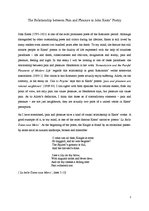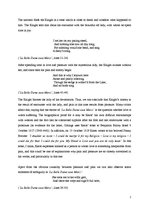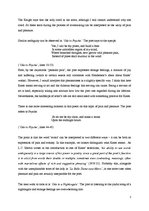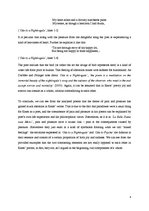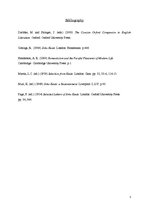-
The Relationship between Pain and Pleasure in John Keats’ Poetry
John Keats (1795-1821) is one of the most prominent poets of the Romantic period. Although disregarded by other outstanding poets and critics during his lifetime, Keats is still loved by many readers even almost two hundred years after his death. To my mind, the feature that still attracts people to Keats’ poems is the duality of life expressed with the help of countless paradoxes – life and death, consciousness and oblivion, imagination and reality, pain and pleasure, feeling and sight. In this essay I will be looking at one of these paradoxes: the relationship between pain and pleasure. Henderson in her work ‘Romanticism and the Painful Pleasures of Modern Life’ regards this relationship in great Romantics’ works somewhat masochistic (2008:1). Her vision is that Romantic poets actually enjoy suffering. Alloth, on the contrary, in his essay on ‘Ode to Psyche’ says that in Keats’ poems ‘pain and pleasure are relaxed neighbours’ (1969:80). I can agree with both opinions but to certain extent; from my point of view, not only pain can cause pleasure, as Henderson says, but pleasure can cause pain. As to Alloth’s definition, I think that those as if contradictory elements – pain and pleasure – are not just neighbours; they are actually two parts of a united whole in Keats’ perception.
As I have mentioned, pain and pleasure have a kind of causal relationship in Keats’ works. A good example of it, to my mind, is one of the most famous Keats’ narrative poems ‘La Belle Dame sans Merci’. At the beginning of the poem, the Knight is found by an occasional passer-by alone amid an autumn landscape, broken and miserable:
O what can ail thee, Knight at arms.
So haggard, and so woe-begone?
The Squirel’s granary is full,
And the harvest’s done.
I see a lily on thy brow,
With anguish moist and fever dew;
And on thy cheeks a fading rose
Fast withereth too.
(‘La belle Dame sans Merci’, lines 5-12)
…
The essay is dedicated to the relationship of pain and pleasure in works of John Keats. The work is based on the analysis of secondary literature and on author's analysis of several Keats' poems.

